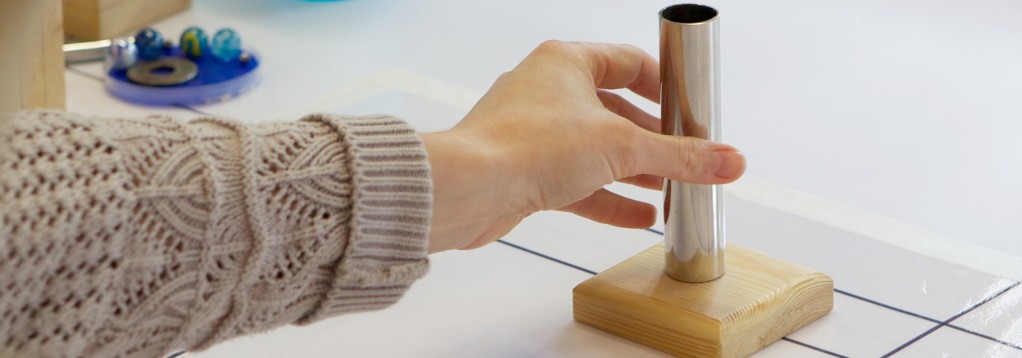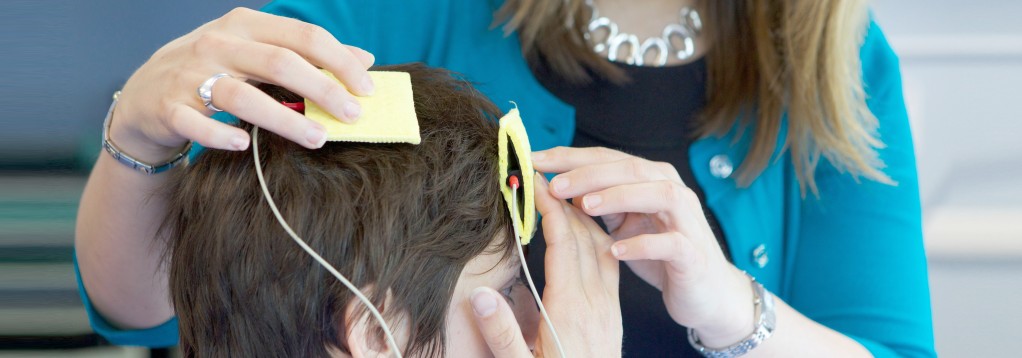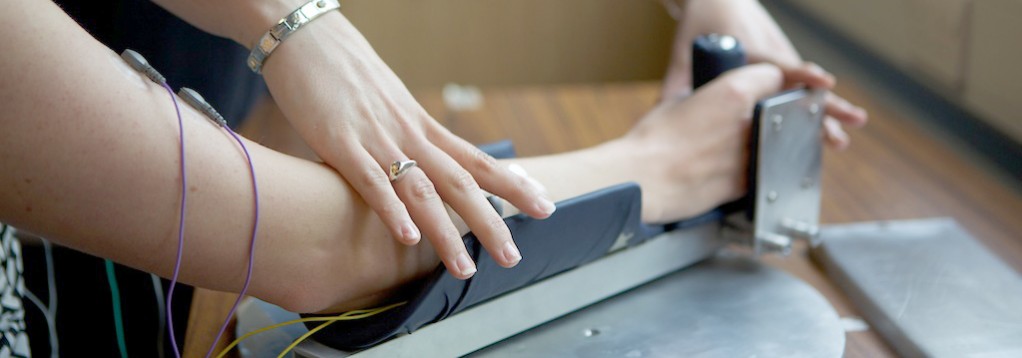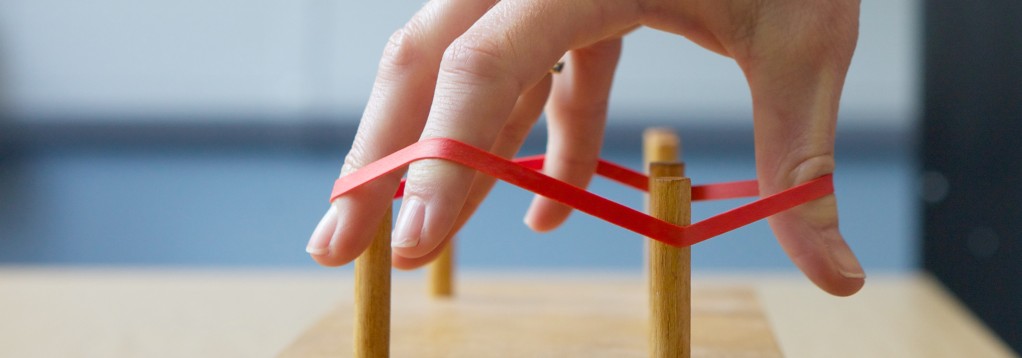Recently Completed Projects
Projects recently completed by ABIRA are detailed below. Please get in touch with the key contact for further information on these projects.
Decoding neural representations of human tool use from fMRI response patterns
Research Team: Dr. Stephanie Rossit (PI) & Dr. Fraser W Smith (Co-PI)
Key Contact: S.Rossit@uea.ac.uk
Read more +Research Team: Dr. Stephanie Rossit (PI) & Dr. Fraser W Smith (Co-PI)
Key Contact: S.Rossit@uea.ac.uk
Funding body: Bial Foundation (Portugal), website:
https://www.bial.com/en/bial_foundation.11/foundation.15/bial_foundation.a36.html
Amount: 47510€
Summary:
Complex tool use (such as using a knife) is considered a typical human behaviour and its emergence is believed to be a critical step in the evolution of primates, even thought to delineate the appearance of Homo sapiens. This project will provide a novel investigation of the underlying neural representations of real hand actions towards 3D tools in the human brain, by implementing cutting-edge functional magnetic resonance imaging (fMRI) techniques, state-of-the-art multivoxel pattern analysis methods (MVPA) as well as advanced motion-tracking methods. Importantly, rather than presenting ungraspable pictures of objects on a flat 2D screen or having subjects imagine or pretend to do tool use acts, this project will actually involve participants performing hand actions directed at 3D tools, as would be the case in the natural environment.
This research will involve measuring the brain activity of participants while they perform real actions towards 3D-printed tools inside the 3T MRI scanner at NNUH using a purpose built ‘real action’ set-up (see Fig.1) as well as measuring their hand movements using motion-tracking equipment at the Vision & Action Laboratory (School of Psychology). The knowledge from healthy subjects will help us understand how goal-directed actions are disrupted in brain-damaged patients, specifically in patients who suffer from motor deficits (hemiparesis, apraxia).
In addition, developments in technologies (neural prosthetics) may one day enable patients, for example amputees or patients with spinal cord injury, to use brain signals fed into a computer chip to control movements of an artificial arm. Our research will provide an important stepping stone for such technology: we are developing a more realistic understanding of the brain networks involved in controlling tool use. Importantly our research studies involve naturalistic actions performed on real objects, factors that are critical in bridging the gap between basic research and everyday life.
Dose in stroke rehabilitation trials
Key Contact: Elisabetta Colucci
Email: e.colucci@uea.ac.uk
Read more +Key Contact: Elisabetta Colucci
Email: e.colucci@uea.ac.uk
Elisabetta Colucci, Allan Clark, Catherine Lang, Valerie Pomeroy
So far, the exact dose of therapeutic exercise required for maximising motor recovery after stroke is unknown. Appropriate dose optimization studies to identify the optimal therapeutic dosages of rehabilitative interventions after stroke are inexistent but welcomed by the research community.
The main aim of this research project is to fulfil the lack of effective methodologies of dosage optimization suitable for stroke rehabilitation research.
In this research I have devised a novel dose-finding study derived from pharmaceutical dose optimization approaches and have adapted it to suit stroke rehabilitation research. I have tested the feasibility of using these novel methodologies to dose-finding by undertaking a feasibility phase I study with stroke survivors engaged in an upper-limb training task.
FALLS: a falls prediction and prevention programme in older Adults with Rheumatoid Arthritis
Key Contact in ABIRA is: Dr Celia Clarke
RA is the most common form of Arthritis in the UK. The aim of this study is to obtain knowledge of the factors which make falls in older adults with RA more likely and to provide detailed guidance on falling prevention in patients with RA.
Read more +Key Contact in ABIRA is: Dr Celia Clarke
RA is the most common form of Arthritis in the UK. The aim of this study is to obtain knowledge of the factors which make falls in older adults with RA more likely and to provide detailed guidance on falling prevention in patients with RA.
FAST INdICATE Trial
Clinical Efficacy of FunctionAl STrength TraINing for upper limb motor recovery early after stroke: neural CorrelATEs and prognostic indicators (FAST INdICATE).
Read more +Clinical Efficacy of FunctionAl STrength TraINing for upper limb motor recovery early after stroke: neural CorrelATEs and prognostic indicators (FAST INdICATE).
Weakness of the arm and hand after stroke affects everyday lives. People with substantial weakness may not be able to participate in proven treatment which requires repeated practice of functional tasks such as pouring water from a jug. The present study will investigate two forms of conventional therapy (CPT). One is called Functional Strength Training (FST). The other is called Movement Performance Therapy (MPT). Both are used but we do not know which stroke survivors will respond best to which therapy.
This is a two group randomised clinical trial in three clinical centres. All 288 participants will receive their conventional physiotherapy (CPT). In addition they will be randomised to receive extra treatment either as MPT or FST. The measures of clinical outcome that will be used to compare the effects of the two extra therapies will be: the ability to use the weaker arm and hand for functional tasks such as picking up a pencil; and the ability to produce voluntary contraction of weak muscles against resistance. These measures will be made before treatment begins, after 6 weeks of treatment and at 6 months after the stroke.
The trial is designed to find whether the benefits of FST justify a subsequent large scale trial. Embedded in the trial are measures to increase understanding of how central nervous system (CNS) recovers in response to MPT and FST after stroke. We know that CNS recovery involves reorganisation of nerve networks in the brain and spinal cord. We do not yet know how to use MPT and FST to encourage beneficial reorganisation to improve outcomes after stroke.
To answer these questions we will combine: brain imaging and magnetic brain stimulation to find out how the biological mechanisms underpinning arm use change over time in the two groups of participants and whether these changes are associated with improvements in the ability to perform everyday tasks.
This research was funded/supported by the National Institute for Health Research (NIHR).
Increasing opportunities for functional communication learning in rehabilitation for people with aphasia post-stroke
Key Contact: Ciara Shiggins
Email: c.shiggins@uea.ac.uk
Read more +Key Contact: Ciara Shiggins
Email: c.shiggins@uea.ac.uk
About 150,000 people in the UK have a stroke each year. One third of stroke survivors experience aphasia, a communication disorder affecting speaking, understanding, writing and reading. Increasing a person’s participation through functional, everyday communication is a key objective of aphasia rehabilitation.
This study investigates the mechanisms of speech and language therapy with a functional goal and how functional communication learning opportunities in routine rehabilitation can be optimised. A systematic review will identify the processes of learning that take place in speech and language therapies with a functional goal. An observational study of interactions between people with aphasia and healthcare professionals will be used to evaluate learning mechanisms. Interviewing will be used to evaluate subjective experiences of rehabilitation participants, both healthcare professionals and people with aphasia.
Supported Communication to Improve Participation in Rehabilitation of people with moderate-severe aphasia after stroke (SCIP-R)
Key Contact: Dr Simon Horton
Email: s.horton@uea.ac.uk
Read more +Key Contact: Dr Simon Horton
Email: s.horton@uea.ac.uk
About a third of people who have a stroke for the first time experience aphasia, a communication disorder affecting speaking, understanding, writing or reading. Aphasia is associated with longer stays in hospital and has severe consequences for all aspects of life.
People with aphasia may not fully benefit from stroke rehabilitation for a number of reasons to do with their communication. They may be unable to understand questions, follow instructions, or express their needs. This may lead to misunderstanding and frustration. Information must be communicated in particular ways to be accessible to them, or they may need additional help to set goals. Staff are not necessarily trained in the skills to support people with aphasia in these ways. ‘Supported communication’ uses a set of techniques to make communication accessible for people with aphasia. A skilled communication partner uses low-tech resources such as pen/paper, pictures, symbols, calendars, or gestures to break down barriers and enable understanding and expression.
Research with community volunteers and students has shown that there are beneficial effects for conversation and engagement. Supported communication could be used by any member of the stroke team to help patients with aphasia to engage more fully in rehabilitation. It has the potential to improve the quality of care, and address some of the key aims of stroke rehabilitation such as adapting to disability, and increasing quality of life and wellbeing.
Previous studies have mostly focused on its use outside the clinical context. This study aims to build on this evidence and see whether supported communication is a technique that can be learned by stroke unit staff, and used during every day rehabilitation to enhance participation and improve outcomes for people with aphasia. The results of the study will be used to strengthen the design of a more comprehensive trial.
Funder: NIHR Research for Patient Benefit
A published paper on this study can be accessed here.
You may be interested in using video as a way of disseminating your research findings or in teaching / education.
Here’s a link to a video we made about some of the findings from the SCIP-R study:
https://www.youtube.com/watch?v=rCe8r_OZDj4&feature=em-upload_owner#action=share.
Making the video was an opportunity to further involve people with aphasia as collaborators (PPI) as well as getting the findings out to a wider audience than may be possible through conventional publishing routes.
Please feel free to forward or use as you will.
SWIFT Cast Trial
Key contact: Nick Leavey
Email: n.leavey@uea.ac.uk
Read more +Key contact: Nick Leavey
Email: n.leavey@uea.ac.uk
Clinical efficacy of the Soft-Scotch Walking Initial FooT Cast (SWIFT Cast) on walking recovery early after stroke and the neural-biomechanical correlates of response.
A SWIFT Cast is a lightweight, semi-rigid cast that supports the leg and foot from just below the knee to the base of the toes. Each SWIFT Cast is custom-made for each individual by a therapist. It is ready to wear after 24 hours after the cast is made.
The main aims of the trial were to examine:
a. If a SWIFT CAST to maintain a correct position of the foot on the leg can help recovery of normal walking;
b. Which particular patients might benefit from the SWIFT Cast;
c. How the brain recovers when people wear a SWIFT Cast.
The scientific papers reporting the results of this trial are currently being written. As these are published a précis of results will be posted here.
Upper limb recovery and neuroplasticity after stroke
Key Contact: Kathryn Collins
Email: Kathryn.collins@uea.ac.uk
Read more +Key Contact: Kathryn Collins
Email: Kathryn.collins@uea.ac.uk
Forty percent of stroke survivors have difficulty using their arm which can lead to decreased independence with activities such as dressing and eating. There is an urgent need to improve rehabilitation. There are two parts to my PhD. First, I will summarise through a systematic review the findings of studies of differences in movement kinematics between healthy adults and stroke survivors when reaching to grasp an object.
Second, I will investigate the reliability of using a technique called transcranial magnetic stimulation. Transcranial magnetic stimulation can be used to measure how well the brain is connected to the weak arm muscles. Reliability is the stability or consistency of a measure over multiple tests.
Together the results will inform clinical rehabilitation by increasing the understanding of the movement deficits that underlie difficulty with everyday activities and provide a neurophysiological measure of the reduction in movement deficits in response to rehabilitation.




